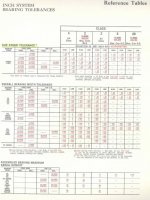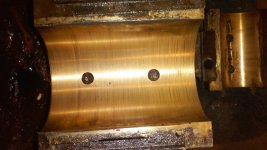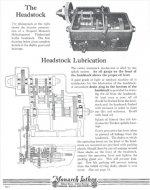TimRD
Aluminum
- Joined
- Sep 3, 2015
- Location
- Pittsburgh, PA, USA
I recently got a Model AA Monarch manufactured ca. 1928 (Thanks John Oder)and I am going through it now to check it over before I put her into service.
I started a thread related to finding out the age of the lathe and the partial tear down of the machine:
http://www.practicalmachinist.com/vb/monarch-lathes/monarch-aa-lathe-manufacturing-date-308540/
I will post some pictures of my progress as I go. I have now taken the carriage off and I'm in the process of trying to get 90 years of crud off of the machine. I have a few repairs and bent handles to fix off of the bat.
Any recommendations on how to make new way wipers? The originals are brass flats with small slotted tabs to permit adjustment on the ways. I broke one off taking the carriage off, but I would prefer to make all new ones. Thanks in advance for the help and I will get a few pictures up today.
I started a thread related to finding out the age of the lathe and the partial tear down of the machine:
http://www.practicalmachinist.com/vb/monarch-lathes/monarch-aa-lathe-manufacturing-date-308540/
I will post some pictures of my progress as I go. I have now taken the carriage off and I'm in the process of trying to get 90 years of crud off of the machine. I have a few repairs and bent handles to fix off of the bat.
Any recommendations on how to make new way wipers? The originals are brass flats with small slotted tabs to permit adjustment on the ways. I broke one off taking the carriage off, but I would prefer to make all new ones. Thanks in advance for the help and I will get a few pictures up today.


![0915152041[1].jpg 0915152041[1].jpg](https://www.practicalmachinist.com/forum/data/attachments/125/125931-f54cfdb807d3eafce8bd36e5c3fcc402.jpg)
![0915152041a[1].jpg 0915152041a[1].jpg](https://www.practicalmachinist.com/forum/data/attachments/125/125932-140b3b04f8fe08373b5edcee79209bfb.jpg)














